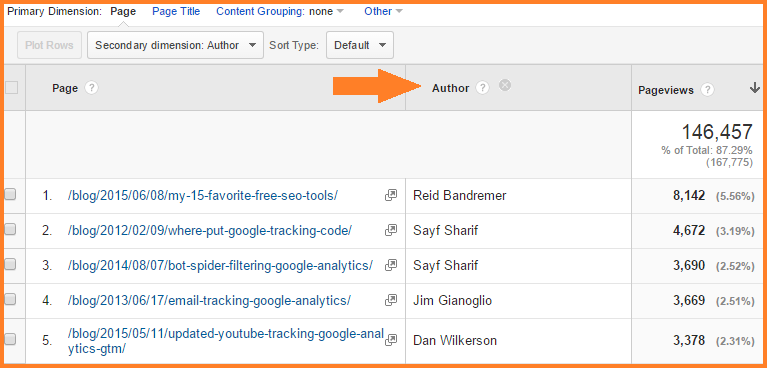The Relevance of 'Secondary Dimensions' in Google Analytics: Comprehensive Analysis
The Relevance of 'Secondary Dimensions' in Google Analytics: Comprehensive Analysis
Blog Article
Browsing the Depths of Additional Dimension in Google Analytics: A Comprehensive Expedition on Its Capability
In the world of digital analytics, the details of information interpretation usually hold the secret to unlocking important insights. Within the expansive toolkit of Google Analytics exists a function that functions as a concealed gem for those that seek a deeper understanding of user habits and website performance. Second dimensions, though seemingly uncomplicated at first glance, harbor a riches of untapped prospective waiting to be utilized. As we start this journey to explore the nuanced performance of additional dimensions, we will discover just how this feature can illuminate patterns, unveil correlations, and inevitably lead the way for educated decision-making in the electronic landscape.
Understanding Additional Measurements in Google Analytics

Recognizing just how second measurements work is critical for leveraging the full power of Google Analytics. By combining key metrics with secondary measurements, you can obtain important insights that drive informed decision-making and optimization strategies.
Leveraging Secondary Measurements for Information Evaluation
Structure upon the fundamental understanding of just how secondary measurements boost data evaluation in Google Analytics, the usage of these additional layers of details comes to be critical in drawing out important insights for educated decision-making and optimization strategies. By leveraging second measurements, experts can dive much deeper into the performance metrics by adding more context to the primary dimensions, thus uncovering concealed patterns and connections that might not be obvious at very first glimpse. This deeper degree of analysis allows services to much better recognize customer actions, identify trends, and determine areas for improvement.
Furthermore, second dimensions supply an even more extensive view of the data, enabling division based upon numerous criteria such as demographics, devices, website traffic resources, and much more. This division helps with an extra granular analysis, making it possible for services to tailor their approaches and campaigns to details audience sectors for boosted targeting and personalization. In essence, the critical usage of second dimensions encourages companies to make data-driven decisions that drive development and success in the digital landscape.
Advanced Techniques for Second Dimension Application
Discovering intricate methods to harness the full potential of secondary measurements in Google Analytics elevates the depth and refinement of data evaluation for critical decision-making. One sophisticated strategy for executing secondary measurements is the usage of custom dimensions. By defining custom dimensions, customers can segment data better to obtain more particular insights into individual actions, such as tracking communications with particular aspects on a website or keeping track of the performance of a particular advertising project. An additional advanced strategy is the usage of regex (normal expressions) within second dimensions. Regex enables for even more effective and flexible pattern matching, allowing users to produce intricate filters for data analysis. In addition, incorporating secondary dimensions with advanced segments can provide even a lot more granular insights by applying multiple layers of segmentation to the information. This technique permits a deeper understanding of user behavior based on different requirements all at once. Implementing these sophisticated strategies for secondary measurements in Google Analytics encourages users to conduct a lot more advanced evaluation and make data-driven choices with precision.
Interpreting Insights Via Second Measurements

When analyzing understandings through second measurements, it is necessary to consider the context of the information and just how various dimensions engage with each various other. Understanding which specific web traffic resources lead to greater conversion prices or identifying which devices individuals like for making acquisitions can supply workable insights for maximizing marketing projects and enhancing general internet site efficiency. By very carefully examining the data with second dimensions in mind, companies can make enlightened decisions that drive meaningful results and boost their digital visibility.
Enhancing Efficiency With Additional Measurements

One essential means to enhance performance with second dimensions is by segmenting information more granularly. This enables you to isolate specific elements that may be affecting your metrics and obtain a much better understanding of what drives success or failure in your digital initiatives. By incorporating additional dimensions such as 'gadget group' and 'landing web page,' you can pinpoint which gadget types are most reliable for specific landing pages, enabling you to tailor your methods as necessary.
In addition, making use of additional dimensions can assist you determine patterns, patterns, and connections that might this not appear when examining information with primary measurements alone. This much deeper level of evaluation can result in more enlightened decision-making and eventually improve the total performance of your internet site or electronic advertising and marketing campaigns.
Verdict
Finally, second measurements in Google Analytics play an important function in boosting data analysis and giving deeper insights right into site performance. By making use of innovative strategies and analyzing the data efficiently, organizations can optimize their strategies and boost general efficiency. Comprehending the functionality of secondary dimensions is necessary for making notified choices and driving success in the electronic landscape.
By leveraging secondary measurements, experts More Info can dig deeper right into the performance metrics by adding even more context to the main measurements, therefore uncovering hidden patterns and connections that may not be apparent at very first glance. One sophisticated method for carrying out additional measurements is the use of personalized dimensions.Having actually mastered sophisticated strategies like custom-made measurements and regex for secondary dimension execution in Google Analytics, the following vital action is interpreting the beneficial understandings derived with these sophisticated information division techniques. Interpreting insights with additional dimensions includes assessing the connections between the secondary and primary dimensions selected, uncovering patterns, fads, and correlations that might not be right away apparent when looking at the data in its entirety.When analyzing understandings through additional dimensions, it is necessary to think about the context of the information and how different measurements communicate with each various other.
Report this page